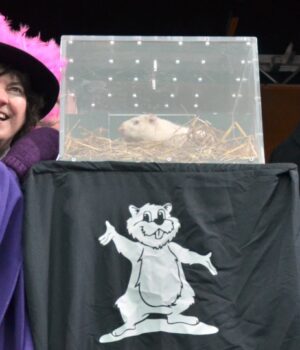
CANADA (Ontario) — The folksy, mid-winter tradition known as Groundhog Day saw Canada’s best-known shadow-casting critters divided in their weather predictions on Sunday.
Nova Scotia’s Shubenacadie Sam emerged from his burrow northeast of Halifax, and according to his handlers, saw his shadow. But in Ontario and Quebec, Wiarton Willie and Fred la Marmotte were paraded before their respective audiences and evidently saw no shadow.
Folklore has it that if a groundhog sees its shadow on February 2, it will retreat into its burrow, heralding six more weeks of cold weather, which is not bad by most Canadian standards. No shadow is said to foretell spring-like temperatures are on the way.
Sam is always the first groundhog in North America to make a prediction about how long winter will last, with Willie offering a guess about an hour later.
This year, the festivities at Shubenacadie Wildlife Park surrounding Sam’s annual prognostication were cancelled this year due to a blustery snowstorm that hit the region on Saturday night. But the fanfare went ahead in Wiarton, Ont., where Mayor Janice Jackson was joined by Premier Doug Ford and the so-called “shadow cabinet” to announce the rodent’s forecast.
The event was not without its share of excitement, however, when Jackson misinterpreted Willie’s supposed forecast. She initially told the town crier that because the rodent saw no shadow, winter was here to stay.
“I messed up!” she told the crowd, laughing. “I messed up totally!”
The group on stage then repeated the ritual, with Jackson double checking before interpreting the critter’s prediction for the second time.
“What am I supposed to say?” she asked through a wide grin.
Willie was backed up by his Quebecois counterpart, Fred la Marmotte of Val-d’Espoir, who also suggested spring was nigh.
Pennsylvania’s Punxsutawney Phil also made an appearance Sunday morning with his top-hatted handlers before a huge crowd at Gobbler’s Knob, and predicted an early spring.
The Groundhog Day ritual may have something to do with February 2 landing midway between winter solstice and spring equinox, but no one knows for sure.
Some say the tradition can be traced to Greek mythology, or it could have started with Candlemas, a Christian custom named for the lighting candles during the feast of the Purification of the Virgin Mary.
One Scottish couplet summed up the superstition: “If Candlemas Day is bright and clear, there’ll be two winters in the year.”
In medieval Europe, farmers believed that if hedgehogs emerged from their burrows to catch insects, that was a sure sign of an early spring.
However, when Europeans settled in eastern North America, the groundhog was substituted for the hedgehog.
On the West Coast, they now call on marmots like Van Island Violet. Like groundhogs, marmots are a type of large ground squirrel.
For most winter-weary Canadians, Groundhog Day is a welcome distraction, but these pug-nosed rodents don’t have a great track record when it comes to long-term forecasting.
In his book, “The Day Niagara Falls Ran Dry,” climatologist David Phillips cites a survey of 40 years of weather data from 13 Canadian cities, which concluded there was an equal number of cloudy and sunny days on February 2. During that time, the groundhogs’ predictions were right only 37 per cent of the time.
This report by The Canadian Press was first published on February 2.






![Kenopic/Smith Auction [Paid Ad]](https://whitewaternews.ca/wp-content/uploads/2018/10/advertising-100x75.jpeg)

